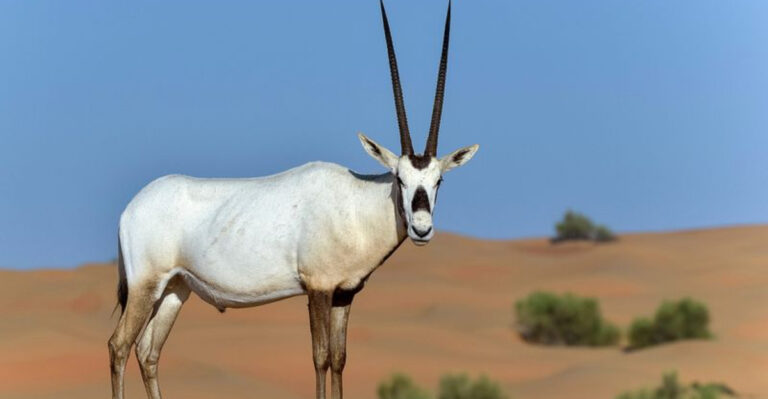Everything You Need To Know About Lions
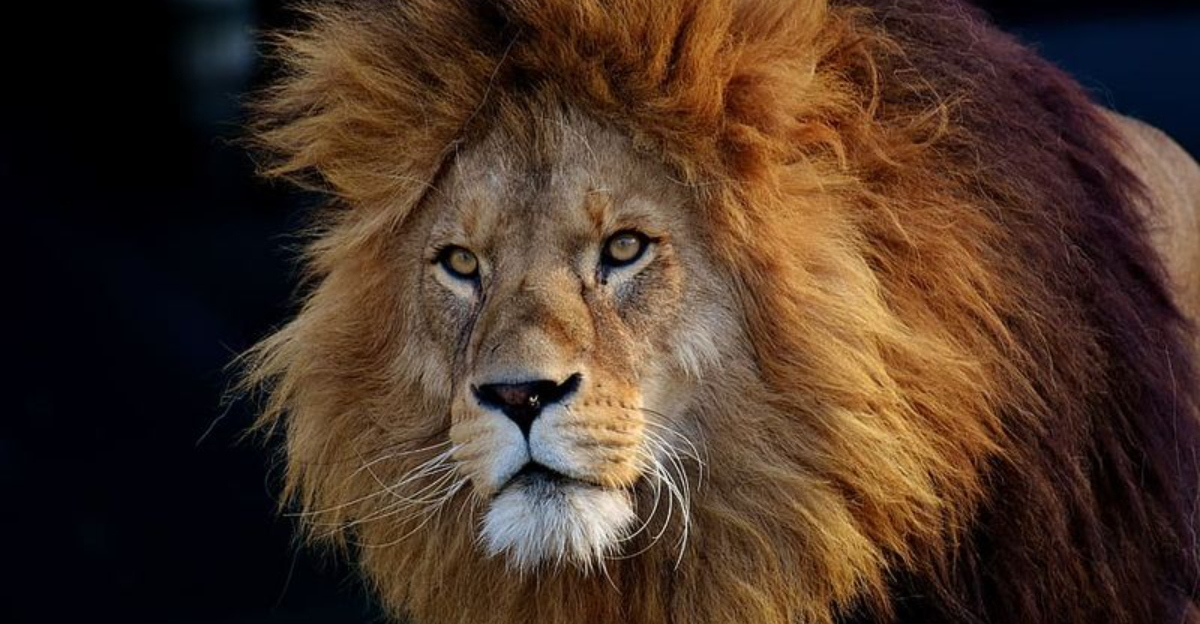
Lions, the kings of the African savanna, have fascinated humans for thousands of years. These powerful big cats are known for their impressive manes, mighty roars, and complex social structures that set them apart from other feline species.
From their hunting techniques to their conservation status, lions represent both nature’s majesty and its vulnerability in today’s changing world.
1. Kings Of The Savanna

Lions hold the prestigious title of ‘King of the Jungle’ despite actually living in grasslands and savannas. These magnificent creatures rule over their territories with strength and pride, establishing themselves at the top of the food chain.
Male lions typically weigh between 330-550 pounds, while females range from 265-395 pounds. Their powerful bodies are built for hunting, with muscular limbs that allow them to reach speeds of up to 50 mph in short bursts.
A lion’s roar can be heard from up to 5 miles away – nature’s way of announcing their dominance across the African plains.
2. Family Pride
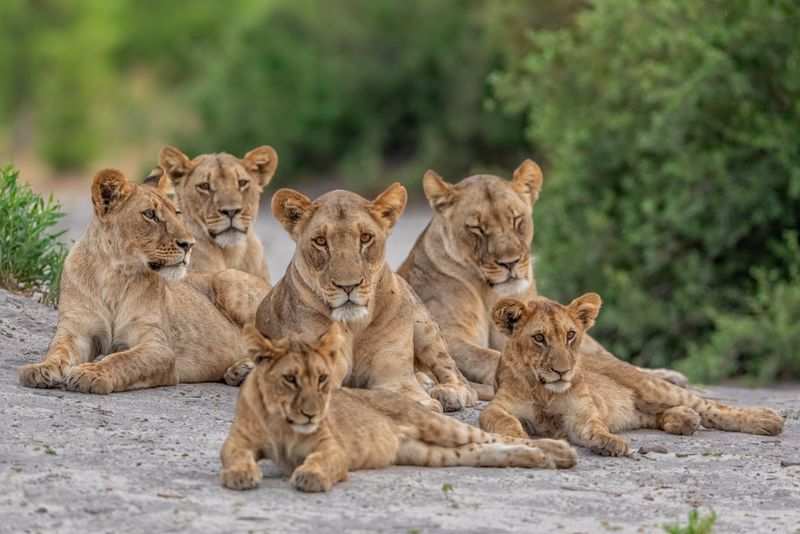
Unlike other big cats, lions are highly social animals that live in groups called prides. A typical pride consists of 2-3 males, about 6-12 related females, and their cubs. This unique social structure helps them defend territory and hunt more efficiently.
Female lions form the core of the pride, often staying together for life. They’re related to each other – sisters, daughters, cousins – creating a tight-knit family unit that works together to raise cubs and secure food.
Males, however, eventually leave their birth pride to establish their own territory, often forming coalitions with other males to increase their chances of success.
3. Hunting Machines
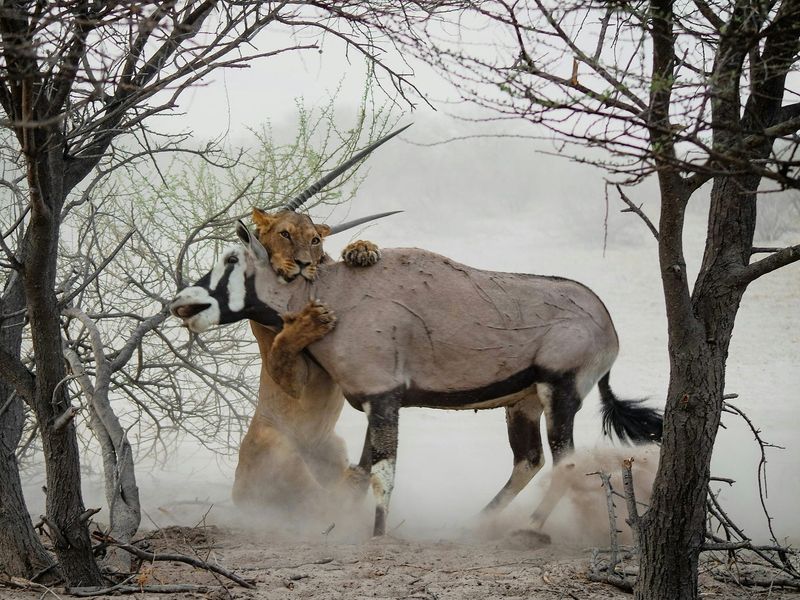
Female lions do approximately 90% of the hunting for the pride, working together in coordinated attacks that showcase their intelligence. They stalk prey silently, using the tall grass as cover before launching a surprise ambush.
Their hunting success rate hovers around 30% – much higher than most predators. Lionesses strategically position themselves to drive prey toward waiting pack members, demonstrating remarkable teamwork.
Despite their reputation as fearsome hunters, lions actually spend about 20 hours a day resting. They conserve energy between hunts, only expending it when necessary. Their preferred prey includes zebras, wildebeest, and buffalo – animals that provide substantial meals for the entire pride.
4. Magnificent Manes
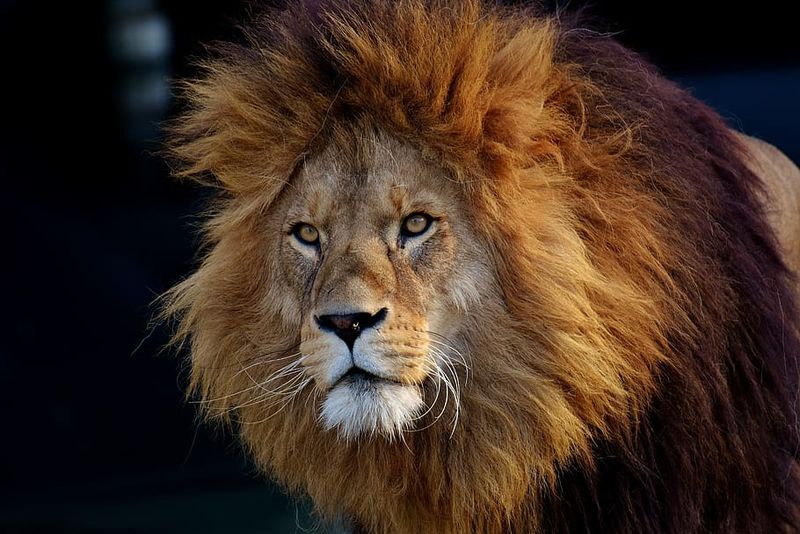
A male lion’s mane serves as more than just a majestic crown – it’s a vital status symbol and protective feature. The darker and fuller the mane, the healthier and more dominant the lion, making it more attractive to potential mates.
Manes begin growing when males reach about one year old and continue developing until they’re around five. The color varies from blonde to reddish-brown to nearly black, with environmental factors and genetics playing roles in its appearance.
Beyond aesthetics, the mane provides crucial protection during fights with rival males, cushioning the neck area from claws and bites. Some lions in hotter regions have evolved with shorter manes to prevent overheating.
5. Cubs And Their Challenges
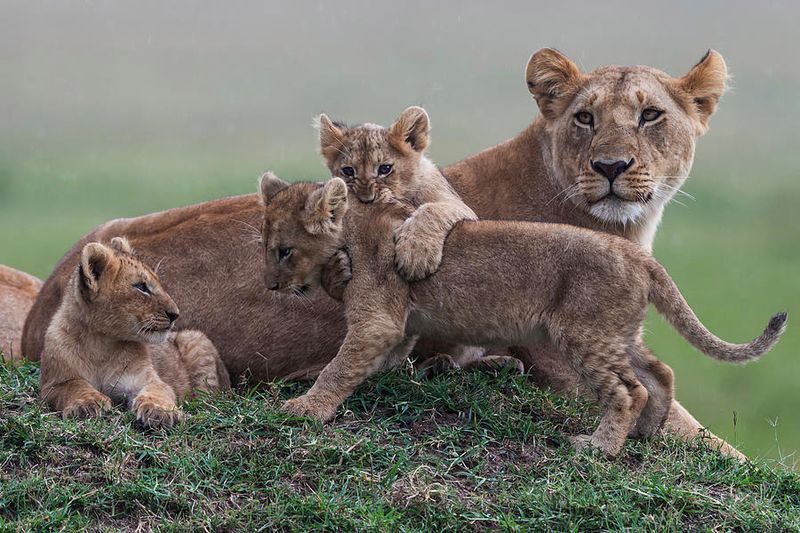
Lion cubs face a perilous start to life, with only about one in four surviving to adulthood. Born blind and helpless, weighing just 3-4 pounds, they rely completely on their mothers for the first few months.
Lionesses often give birth to 2-4 cubs at once and raise them communally within the pride. Cubs begin eating meat around three months old but continue nursing until they’re about six months. They learn hunting skills through play and observation, practicing pouncing and stalking techniques with siblings.
A major threat comes when new males take over a pride – they often kill existing cubs to bring females into estrus faster, allowing them to father their own offspring.
6. Roaring Communication
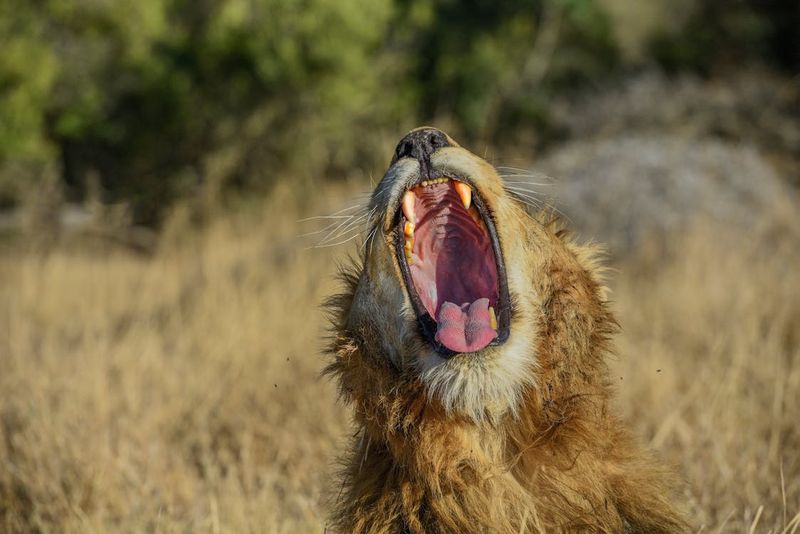
The lion’s iconic roar serves as a powerful form of long-distance communication. Males typically roar to advertise their presence to potential rivals, essentially saying “This territory is taken!” Their specialized vocal cords and unique hyoid apparatus in the throat create this distinctive sound.
Lionesses also roar, particularly when separated from pride members or calling cubs. A pride often roars together in a chorus that strengthens social bonds and intimidates competitors.
Beyond roaring, lions communicate through an array of sounds including grunts, growls, moans, and purrs. They also use body language – tail positions, ear movements, and facial expressions – to convey intentions and emotions to other pride members.
7. Territorial Boundaries
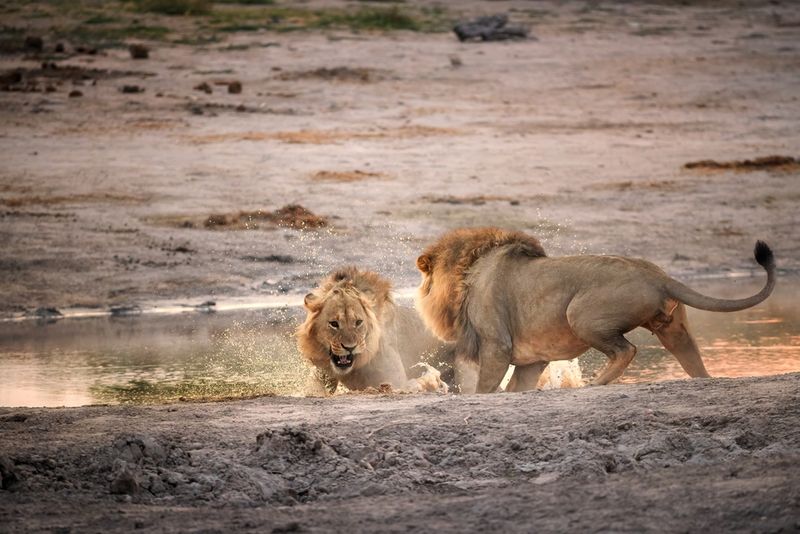
Lions are fiercely territorial animals, with prides claiming and defending areas ranging from 8 to 150 square miles. The size depends largely on prey availability – territories in prey-rich regions can be smaller while maintaining adequate food sources.
Males patrol boundaries regularly, marking them with urine and loud roars. These territorial displays help prevent conflicts by warning other lions to stay away. When confrontations do occur, they can be deadly – fighting between male lions is one of their leading causes of death.
Interestingly, territories often include core areas used exclusively by the pride and buffer zones that may overlap with neighboring prides. During droughts or food shortages, these boundaries may temporarily shift as lions follow migrating prey.
8. Nighttime Hunters

Lions excel at hunting in darkness, with specialized night vision approximately six times more sensitive than human eyesight. A reflective layer behind their retinas called the tapetum lucidum enhances available light, giving them a significant advantage when stalking prey after sunset.
Most hunts occur between dusk and dawn when temperatures cool and prey animals become more active. This nocturnal strategy also helps lions avoid the scorching African daytime heat, conserving precious energy.
Their whiskers serve as crucial sensory tools during night hunts, detecting subtle air movements that help them navigate and judge distances in low light. Combined with acute hearing that can detect prey movements from great distances, lions become nearly unstoppable predators once darkness falls.
9. Endangered Status

Lion populations have plummeted by approximately 43% over the past two decades, earning them a vulnerable classification on the IUCN Red List. Just a century ago, lions roamed throughout Africa, parts of Asia, and even southern Europe – today, they occupy less than 8% of their historic range.
Habitat loss represents their greatest threat as human populations expand into traditional lion territories. Poaching, trophy hunting, and conflict with livestock farmers further diminish their numbers. Disease outbreaks, particularly canine distemper virus, have decimated entire prides.
Currently, roughly 20,000 lions remain in the wild, primarily in protected African reserves. Conservation efforts focus on creating wildlife corridors, reducing human-lion conflicts, and establishing breeding programs to maintain genetic diversity.
10. Mane-less Mysteries

The Tsavo lions of Kenya have puzzled scientists for generations with their distinctive lack of manes. These unusual lions gained notoriety in 1898 when two males allegedly killed 135 railway workers, later becoming the subject of the film “The Ghost and the Darkness.”
Researchers believe their mane-less appearance results from evolutionary adaptation to the region’s intense heat and thorny vegetation. Without thick manes, these lions stay cooler and move more easily through dense brush when hunting.
Female lions in Botswana’s Okavango Delta present another mystery – some have developed manes and exhibit male-like behaviors. Scientists attribute this rare phenomenon to hormonal abnormalities that trigger testosterone production, blurring traditional gender characteristics.
11. Surprising Speed

Lions possess remarkable bursts of speed, reaching up to 50 miles per hour when chasing prey – faster than Olympic sprinters by a considerable margin. This explosive acceleration allows them to close distances quickly, though they can maintain top speeds for only about 100-200 yards.
Their running style involves a unique galloping gait where all four feet leave the ground simultaneously. Powerful hind legs provide the main thrust, while their flexible spine extends and contracts to increase stride length.
What makes this speed particularly impressive is a lion’s size – males can weigh over 500 pounds, making their acceleration comparable to sports cars. However, lions are ambush predators by nature, preferring stealth over speed whenever possible to conserve energy.
12. Unique Paw Prints

Lion paw prints are as distinctive as human fingerprints, allowing researchers to identify individual animals by their tracks. A typical lion paw measures approximately 4-5 inches wide, with males generally having larger prints than females.
Unlike domestic cats, lions cannot fully retract their claws, leaving small claw marks visible in their prints. This adaptation provides better traction when running at high speeds across the savanna.
Tracking lions by their paw prints has become an essential conservation tool. Researchers create databases of individual print patterns to monitor population movements, territory ranges, and hunting behaviors without disturbing the animals. Some conservation programs train local trackers who can identify specific lions and prides solely from their distinctive footprints.
13. White Lions
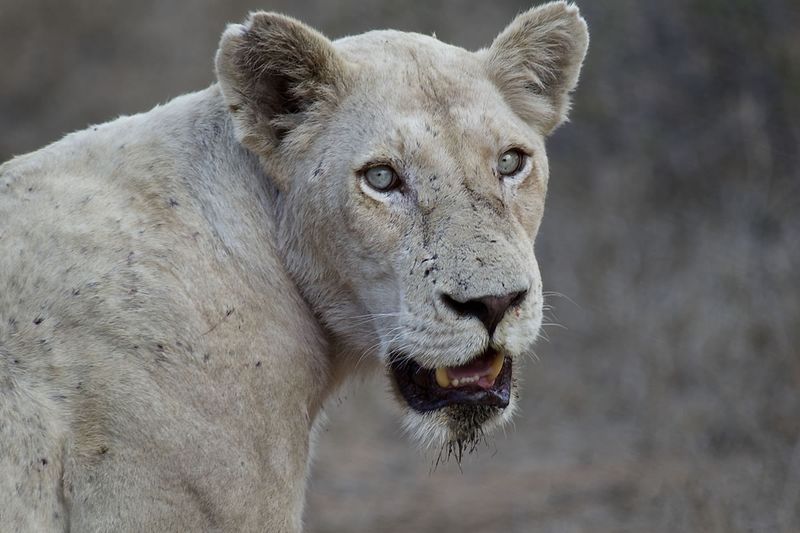
White lions aren’t albinos but rather showcase a rare color mutation called leucism. This condition reduces pigmentation in their fur while maintaining normal eye color, creating a stunning cream or white appearance that’s exceedingly rare in the wild.
These magnificent creatures hold sacred status in African folklore, particularly among the Timbavati region’s indigenous people who consider them divine messengers. The mutation occurs naturally in this area of South Africa, though white lions now exist primarily in captivity.
Contrary to popular belief, their unusual coloration doesn’t necessarily disadvantage them as hunters. Studies of white lions in semi-wild environments show they adapt hunting techniques to compensate for increased visibility, often hunting at night when their coloration becomes less conspicuous.
14. Ancient Relationships

Humans and lions share a complex history spanning thousands of years, evidenced by cave paintings dating back 15,000-17,000 years. Ancient Egyptians revered lions, associating them with deities like Sekhmet, the lion-headed goddess of war and healing.
The Romans captured thousands of lions for gladiatorial combat, contributing significantly to their disappearance from Europe and parts of the Middle East. In medieval Europe, lions symbolized nobility and courage, appearing prominently in heraldry and royal emblems.
Modern relationships remain complicated – lions face threats from human expansion while simultaneously benefiting from conservation efforts. Trophy hunting remains controversial, with some arguing it funds protection while others condemn the practice. Today’s wildlife tourism provides economic incentives for communities to protect these magnificent creatures.
15. Sleeping Champions
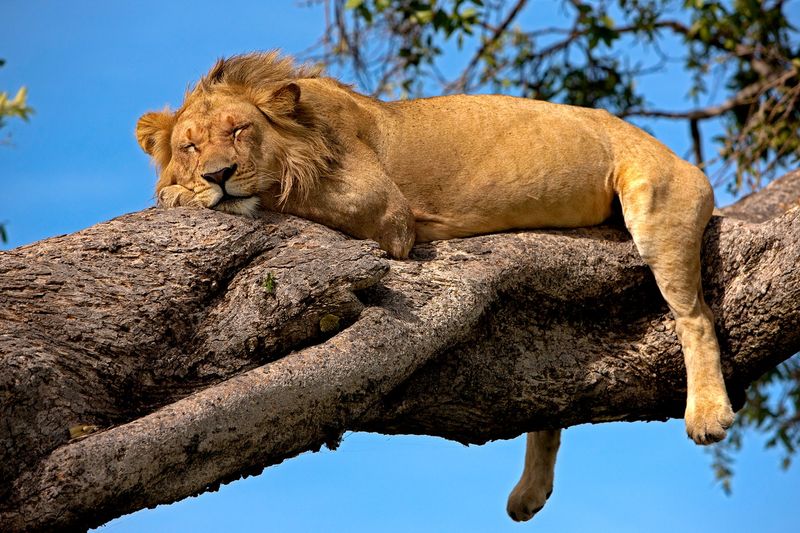
Lions hold the title of sleep champions among big cats, snoozing for an impressive 16-20 hours daily. This extended rest isn’t laziness but rather an energy conservation strategy essential for their survival in harsh environments.
After large meals, lions may sleep for up to 24 consecutive hours while digesting. Their favorite sleeping positions include sprawling on their backs with paws in the air during cool weather or finding shaded areas beneath acacia trees during intense midday heat.
Despite appearing deeply unconscious, lions maintain awareness of their surroundings even while sleeping. Their ears continue tracking sounds, and they can spring from apparent slumber to full alertness in seconds if they detect potential threats or prey opportunities.


